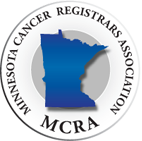
Minnesota Cancer Registrars Association
Minnesota Cancer Registrars Association the ONLY professional association in Minnesota specifically serving the needs of the oncology data specialist.
Lake Superior
Lake Superior is the largest of the Great Lakes in surface area and volume. Lake Superior could contain all the other Great Lakes plus three more lakes the size of Lake Erie. Water flows into the lake from many small rivers and streams. The Long Lac and Ogoki diversions in Canada channel water into Lake Superior that would otherwise flow into Hudson Bay. By order of the International Joint Commission, the lake’s level, controlled by gates on the St. Marys River at Sault Ste. Marie, may not exceed 602 ft (183 m) above sea level. Each year a small percentage of the lake’s water flows out through the St. Marys River, and it takes almost two centuries for the water to be completely replaced (retention time). The Lake Superior drainage basin is rich in natural resources and scenic beauty. It is sparsely populated and economically dependent on its natural resources, which include metals, minerals, forests and recreation/tourism opportunities such as national lakeshores and national/state/provincial parks. It is particularly known for its clear, cold water and agate beaches. A circle tour guides highway travelers around the lakeshore. Many shipwrecks in Lake Superior are now protected in bottomland preserves and accessible to recreational divers. In 1985, scientists using a submersible vessel descended for the first time to the deepest part (-1,333 ft./-405 m) of Lake Superior near the Pictured Rocks National Lakeshore in Michigan waters.
LENGTH: 350 miles / 563 km.
BREADTH: 160 miles / 257 km.
AVERAGE DEPTH: 483 ft. / 147 m.
MAXIMUM DEPTH: 1,332 ft. / 406 m.
VOLUME: 2,900 cubic miles / 12,100 cubic km.
WATER SURFACE AREA:W 31,700 sq. miles / 82,100 sq. km.
TOTAL DRAINAGE BASIN AREA: 49,300 sq. miles / 127,700 sq. km.
DRAINAGE BASIN AREA BY STATE/PROVINCE:
- Michigan: 7500 sq mi; 19,300 sq km
- Minnesota: 6200 sq mi; 16,000 sq km
- Ontario: 32,200 sq mi; 83,300 sq km
- Wisconsin: 3000 sq mi; 7700 sq km
SHORELINE LENGTH (including islands): 2,726 miles / 4,385 km.
ELEVATION: 600 ft. / 183 m.
OUTLET: St. Marys River to Lake Huron
RETENTION/REPLACEMENT TIME: 191 years
NAME: The first French explorers approaching the great inland sea by way of the Ottawa River and Lake Huron referred to their discovery as le lac superieur. Properly translated, the expression means “Upper Lake,” that is, the lake above Lake Huron. Kitchi-gummi, a Chippewa Indian translation, signifies Great-water or Great-lake. A Jesuit name, Lac Tracy, was never officially adopted.
References: Great Lakes Atlas, Environment Canada and U.S. Environmental Protection Agency, 1995